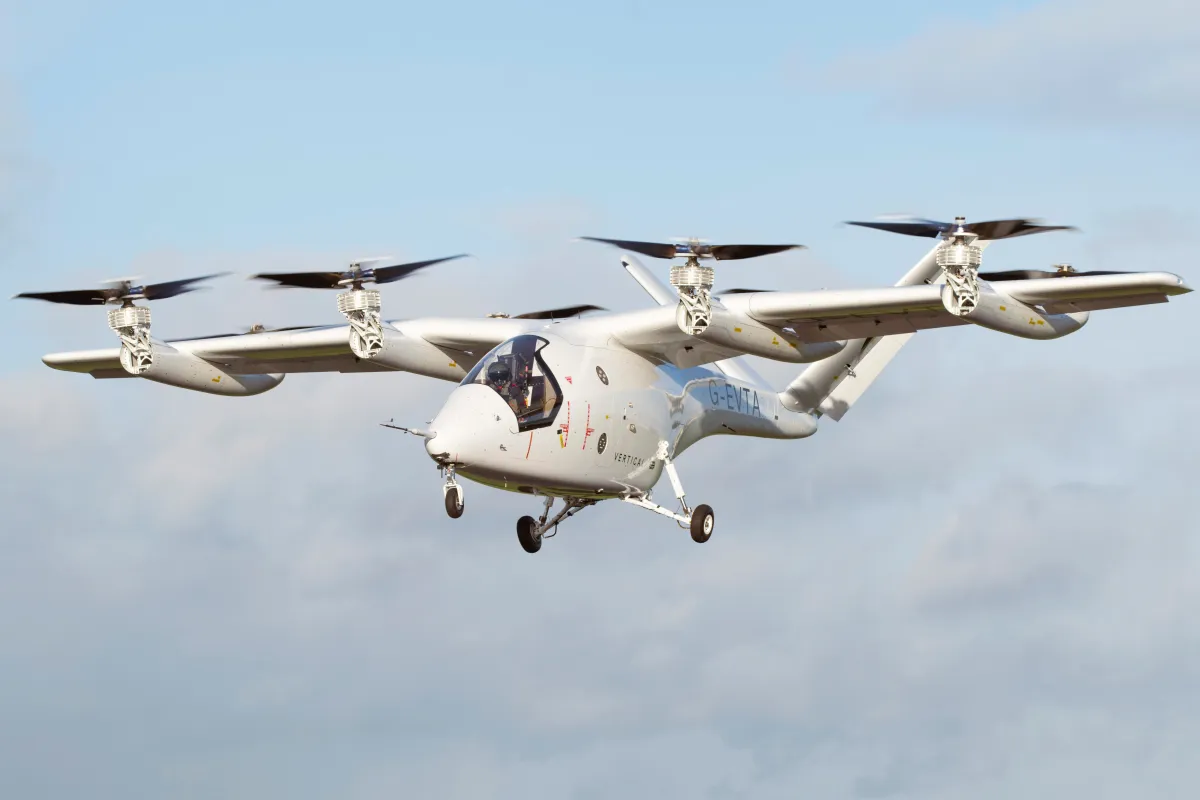
Vertical Aerospace, the British startup known for its electric vertical takeoff and landing (eVTOL) aircraft, is expanding its focus beyond air taxis into the defense and logistics sector. The move comes amid surging investment in European defense technology, fueled by the war in Ukraine and shifting global alliances.
From Air Taxis to Defense-Ready Aircraft
While Vertical has made headlines with over 1,500 preorders for its VX4 eVTOL from major commercial airlines like American Airlines, Japan Airlines, and GOL, it’s now shifting gears. The company announced this week its plans to develop a hybrid-electric version of the VX4, designed to extend range and broaden applications — particularly for military use.
“This aircraft was always built with defense in mind,” said Stuart Simpson, CEO of Vertical Aerospace, noting the hybrid model will have a range of up to 1,000 miles — nearly ten times that of the current electric-only version.
Hybrid-electric VTOLs are particularly appealing for defense thanks to their low heat and sound profiles, as well as their potential for autonomous or remote operation. Vertical is partnering with Honeywell, which is developing autonomous tech for the U.S. military, to power its flight control systems.
No Longer Just a Civilian Race
Vertical isn’t alone in pivoting toward military applications. U.S.-based Archer Aviation launched a defense division in late 2024 and is working with defense tech firm Anduril on its own hybrid aircraft. That announcement helped Archer secure an additional $430 million in funding.
Simpson says Vertical’s move isn’t reactionary — the hybrid aircraft project has been in stealth development for 18 months. But the timing is fortuitous. European nations are rapidly ramping up defense spending, with 2023 seeing a record $1 billion in VC investment into defense tech, a fivefold increase since 2018.
Several sovereign funds, including the €1B NATO Innovation Fund and Estonia’s SmartCap, are also backing startups. Lithuania, for example, plans to allocate 5–6% of GDP to defense, with some of that capital flowing into tech startups via Coinvest Capital.
Alone in the European Skies
With major competitors like Volocopter (bankrupt) and Lilium (shut down) exiting the scene, Vertical is now the sole European player left standing in the eVTOL space. That gives it a unique opening to serve defense agencies looking to invest in domestic, sovereign solutions.
Still, scaling remains a challenge. While Vertical has raised around $468.8 million — including a recent $90 million direct public offering in January — it lags far behind U.S. rivals:
Joby Aviation: $2.82B raised
Archer Aviation: $3.36B raised
Beta Technologies: $1.15B raised
Despite the gap, Simpson emphasizes Vertical’s capital discipline:
“We’ve stayed lean at about $100 million in annual spending. Our competitors are burning through $400 to $500 million,” he said. “We’ve developed this hybrid aircraft within that envelope.”
Manufacturing Comes Later
While U.S. rivals are building large-scale factories and investing in automation, Vertical is taking a measured approach. It will only ramp up production after securing full certification — expected by 2028.
“You can waste a lot of money jumping into robotic manufacturing too early,” Simpson said. “These vehicles are incredibly complex. First, you hand-build a few hundred, then you simplify and automate.”
The first certified pre-prototype of the hybrid VX4 is expected in 2026, with flight testing to begin next year. For now, all flight tests are piloted, in compliance with strict U.K. aviation laws.
Still No Military Contracts — Yet
Vertical has not yet signed any military customers, but Simpson says conversations are ongoing:
“We’ve had deep discussions with defense agencies. And being the only European eVTOL company still standing puts us in a very strong position.”
As Europe shifts defense priorities toward homegrown tech, Vertical Aerospace may be on the cusp of becoming a critical player in both civilian and military aviation.

